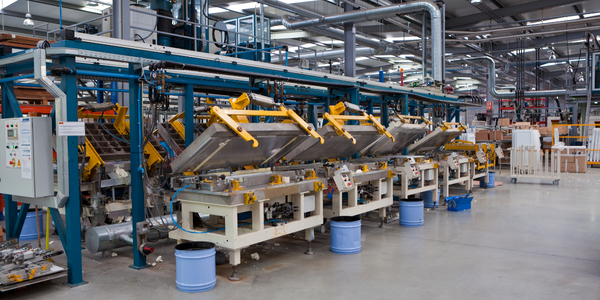Use Cases
- Additive Manufacturing
- Time Sensitive Networking
Services
- Testing & Certification
About The Customer
Vulcan is a privately held company established in 1986 by Paul Allen and his sister Jody. The company was created to manage and oversee the family's diverse business activities and philanthropic endeavors. Vulcan has a workforce of 800 employees. The company's HR team is responsible for handling payroll, a task that involves printing payroll checks. However, they were facing challenges with the printers going down frequently, leading to delays in the printing and delivery of checks. The IT team was tasked with investigating and resolving this issue.
The Challenge
Vulcan, a privately held company founded by Paul Allen and his sister Jody in 1986, was facing a significant challenge with their payroll processing. The HR team responsible for payroll was experiencing issues with the printers used for printing payroll checks. The printers were frequently going down, and without any monitoring system in place, the only way to identify this issue was by physically checking each printer. This method was not only time-consuming but also led to delays in identifying the problem, which in turn caused delays in the printing and delivery of checks. The IT team was tasked with investigating the issue and finding a solution to ensure the smooth operation of the printers.
The Solution
The IT team at Vulcan discovered that the printers were not processing printing commands after falling idle. To address this, they decided to use LogicMonitor, an IoT solution, to monitor the printers and alert the HR team when the machines went into an idle state. This immediate solution ensured that the HR team was notified when their printers went to sleep, reducing the time taken to identify the issue. The IT team then tested if they could ping the devices via the collector to 'wake' them, eliminating the need for someone to physically re-activate the printers. The testing was successful, and this solution was implemented, ensuring that the printers were ready to operate at any given moment, regardless of whether someone was physically present or not.
Operational Impact
Quantitative Benefit

Case Study missing?
Start adding your own!
Register with your work email and create a new case study profile for your business.
Related Case Studies.

Case Study
Ford Motor Company on the Road to 3D Manufacturing
To date, key challenges have stood in the way of 3D printing becoming a manufacturing tool for the automaker. The first issue is a fundamental one — conventional 3D printing technologies make parts layer-by-layer, slowly crafting one layer at a time, creating parts that aren’t nearly as robust as those stamped or injection molded. While the slow speed of this process is a major drawback, the bigger problem is that the parts produced are not isotropic and not durable enough to be used in production vehicles. In addition, most parts used in vehicles today must withstand temperature extremes from the hottest desert to the coldest Arctic environments and still maintain their integrity. With only a handful of stock materials available for 3D printers, meeting the automaker’s unique demands has not been possible.

Case Study
Bekaert's Journey to Manufacturing Digitalization with TCS
Bekaert, a major player in the steel wire industry, was facing significant challenges in its manufacturing operations due to outdated data platforms. The company was unable to trace genealogy beyond a week's data and lacked diagnostic analysis of plant operations, which severely hampered decision-making. The absence of automation in benchmarking operations and extensive reporting on plant management further complicated the situation. To enhance efficiency and effectiveness in multiple focus areas, Bekaert needed a modern data platform capable of managing large volumes of data and generating actionable insights. The company aimed to drive quality, overall equipment effectiveness (OEE), and plant productivity based on these insights.

Case Study
3D Printed Prototypes Streamline Equipment Introduction
Vauxhall set out to introduce a modified process hanger with a new part that would be used to support each vehicle body throughout the production process. This part is a critical piece and had to perfectly fit both the machinery and the auto body to create correct clearances and avoid damage during production.

Case Study
Centralizing Data for Improved Efficiency: A Case Study on Malvern Panalytical
Malvern Panalytical, a UK-based hi-tech electronics company, was grappling with the challenge of decentralized data storage. The company had a vast amount of unstructured data scattered across various platforms, from hard drives to emails and floppy disks. This made the data searching process extremely cumbersome and inefficient. The company's rapid growth, from 200 to over 1,000 employees in a decade, and expansion across three continents further exacerbated the need for a more structured and centralized data system. As a company involved in electronics manufacturing and software development, it was crucial for Malvern Panalytical to find a platform that could structure all their data, track all modifications of documents in real time, and provide clear visibility of the internal information flow across all its facilities.









